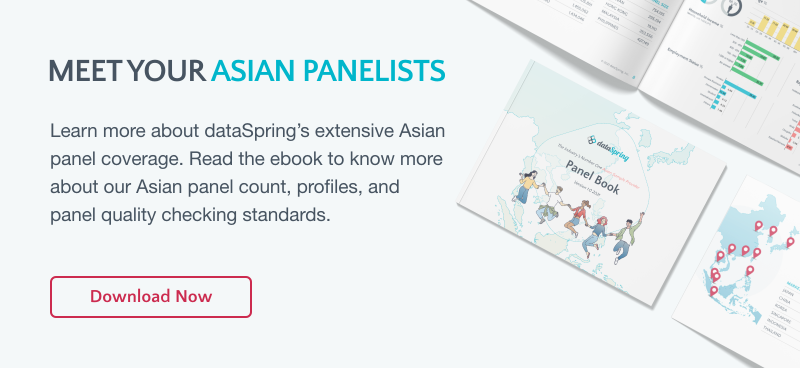Why Friendship in Asia Matters?
Friendship plays a central role in shaping human connection, and in Asia—a region rich in tradition, diversity, and rapid modernization—friendships reflect evolving cultural dynamics. From long-standing values of collectivism to modern expressions of individuality, the concept of friendship in Asia is undergoing a transformation worth understanding. As a market research company deeply connected to Asian communities, we at dataSpring explore these shifts to reveal how brands and researchers can build more authentic relationships in the region.
Traditional Foundations of Friendship in Asia
Historically, many Asian cultures have prioritized group harmony, loyalty, and shared responsibilities over individual pursuits. Concepts like guanxi in China, nakama in Japan, and jeong in Korea all illustrate a deeply rooted cultural framework where friendship is built on mutual obligation and trust over time.
- China: Guanxi networks have long governed social and business relationships, emphasizing reciprocity and loyalty.
- Japan: In Japanese culture, friendships often grow out of shared affiliations—schools, workplaces, or clubs—with emotional restraint and gradual trust-building.
- India: Strong familial ties often extend into friendships, with emphasis on loyalty, emotional support, and shared values.
These traditional values still inform friendship today, but they are now being reinterpreted by younger generations navigating a more individualistic, digitally driven world.
Emerging Trends: The Modern Asian Friend
1. Smaller Circles, Deeper Bonds
Across Asia, young people are maintaining fewer but more meaningful friendships. In China, research shows the average Gen Z individual has only two close friends—a sharp contrast to older generations who often maintained wider social circles for collective support. This shift reflects a growing preference for emotional safety and quality over quantity.
2. Zero-Sugar Socializing in China
Coined by local youth, "zero-sugar socializing" reflects a desire for stress-free friendships with minimal emotional labor. It’s about staying connected without the burden of constant interaction—akin to enjoying a zero-calorie beverage: light, easy, and refreshing. This trend reflects mental health awareness and the growing need for boundaries.
3. Hybrid Friendships in Japan and Korea
With work-life boundaries blurring in Japan and South Korea, young professionals are forging hybrid friendships—co-workers who become personal confidants. Digital communication platforms like LINE and KakaoTalk support this trend, allowing for constant but casual contact.
4. Friendship Meets Fandom in Southeast Asia
In countries like the Philippines, Indonesia, and Thailand, fandom communities offer fertile ground for forming friendships. K-pop, anime, and online gaming fandoms connect young people across borders and classes, creating belonging through shared passion. Digital Technology: Changing How Friendships Are Made
Digital Technology: Changing How Friendships Are Made
Technology has transformed socialization in Asia. Apps like WeChat, WhatsApp, LINE, and Instagram are reshaping how friends interact, maintain ties, and form communities.
- Micro-communities are thriving, where people connect over niche interests or shared causes.
- Virtual support networks offer solace and connection during times of physical distancing or social isolation.
- Online-to-offline (O2O) friendships—starting online and deepening offline—are more accepted, particularly in urban settings.
In Japan, the rise of friendship apps like Slowly (for letter-style conversations) suggests a desire to reintroduce slowness and thoughtfulness into digital communication.
Cultural Differences Across Asia
Though Asia is often grouped together, friendship norms vary greatly by country:
- China: Friendship often overlaps with strategic social networking (guanxi), even among peers.
- Japan: Group belonging takes precedence, with an emphasis on not standing out.
- India: Friendships are expressive and emotive; close friends often feel like extended family.
- Philippines: Friendships are open, affectionate, and often playful, reflecting the country's collectivist and joyful culture.
Understanding these nuances is crucial for researchers and marketers who want to build genuine connections in each market.
Gender and Friendship
Friendship dynamics in Asia also reflect evolving gender roles. While traditional norms often dictated same-gender socialization, more Asian youth today embrace cross-gender friendships, particularly in urban and university settings.
Additionally, discussions around gender identity and inclusivity have fostered safe spaces where friendships are not bound by binary expectations. In progressive circles, gender-diverse friendships reflect broader values of acceptance and individuality.

Friendship, Mental Health, and Work Culture
In high-pressure societies like South Korea and Singapore, mental health awareness has become more prominent. Friendships serve as key emotional outlets, but also sources of anxiety when they become too performative or demanding.
As a result:
- There’s a move toward low-maintenance friendships.
- Workplaces are being called to foster genuine connections rather than forced bonding activities.
Companies can play a role by supporting employee well-being programs that foster real connections, especially in remote or hybrid work setups.
Opportunities for Brands and Researchers
Friendship insights have practical applications for product development, marketing, and user engagement:
- Community-driven marketing resonates strongly in Asia’s friendship-centered cultures.
- Trust and credibility are crucial—brand recommendations often flow through friend networks.
- Emotional authenticity matters: Ads or messages that evoke shared memories or celebrate friendship perform better across platforms.
For researchers, these trends highlight the value of:
- Using culturally localized approaches.
- Tapping into peer networks for deeper qualitative insights.
- Designing surveys that reflect local social dynamics.
Conclusion: Friendship is Changing, But Connection Endures
Friendship in Asia is at a crossroads—where tradition meets transformation, and digital life blends with emotional depth. From zero-sugar bonds in China to fandom-fueled friendships in Southeast Asia, the way people connect is shifting in response to societal changes, technology, and evolving values.
Understanding these shifts isn’t just a cultural exercise—it’s essential for brands, employers, and researchers who want to build meaningful, respectful, and lasting relationships in Asia. At dataSpring, we don’t just observe trends—we live them, with people-powered insights that bridge borders and reveal what truly connects us.
Get in touch with our team to learn how your brand can better connect with Asian audiences.
Curious for more? Dive into Happiness, Eating Out and Drinking Behavior in South Korea or explore Gen Z's Consumption of Korean Content and Products in Southeast Asia—all right here on Eye On Asia. Stay tuned for our next feature! ✨



 Download Panel Book
Download Panel Book


